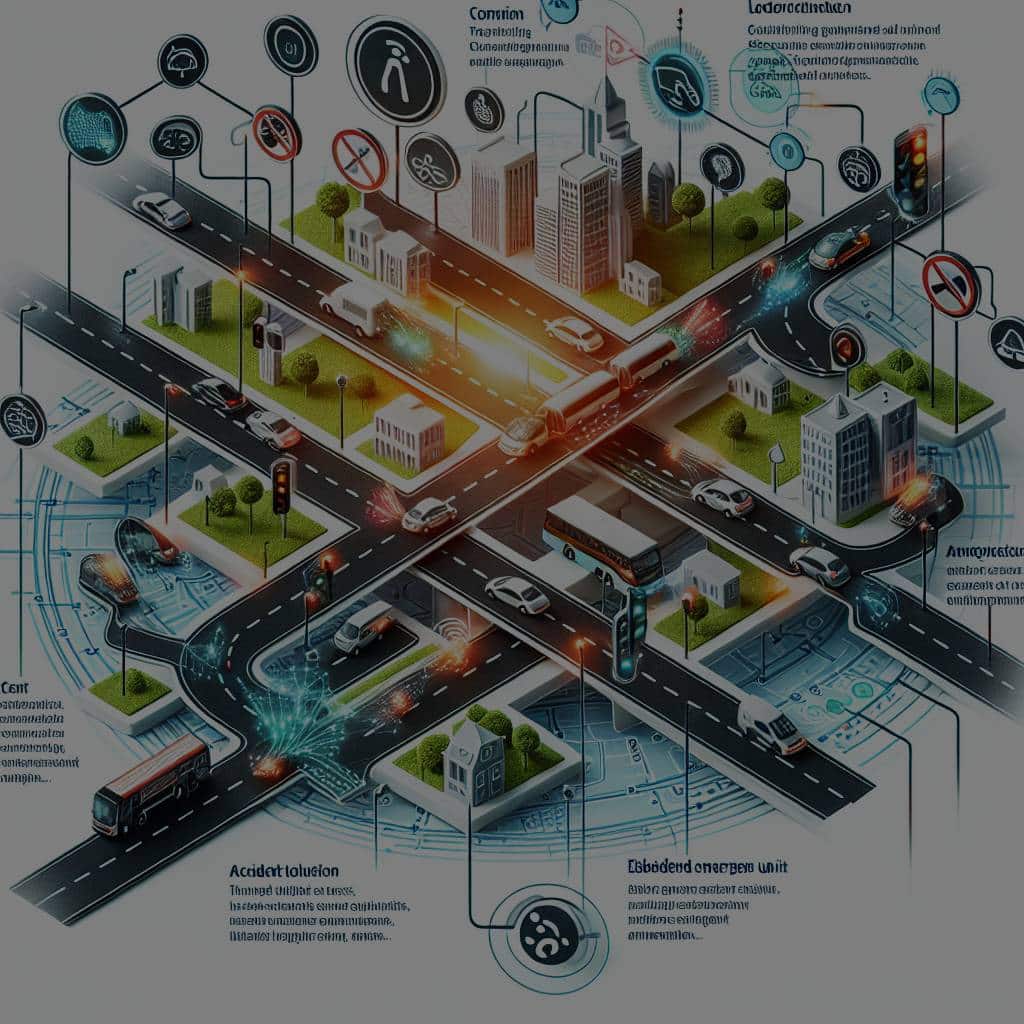How Can Smart Roads Improve Traffic Flow and Reduce Accidents?

As we venture further into the 21st century, emerging technology is being used to tackle some of the most pressing societal issues of our time. One such pressing issue is the ever-increasing traffic congestion in our cities, and the resultant road accidents. Smart roads are a solution that can not only improve traffic flow but also drastically reduce accidents. This article will explore how data-driven and intelligent road management systems can transform our transportation infrastructure, making our roads safer, more efficient, and ultimately, smart.
The Concept of Smart Roads
Before we delve into how smart roads can enhance traffic flow and safety, it’s essential to understand what smart roads are. Simply put, smart roads are a type of intelligent transportation system (ITS) that uses data and technology to improve the efficiency and safety of road transportation.
En parallèle : Will Individual Carbon Footprint Tracking Apps Influence Consumer Behavior?
Smart roads involve the use of sensors, communication systems, and data analytics to monitor and manage traffic patterns. They integrate information and communication technology with infrastructure, offering real-time data about traffic and road conditions. This data can be used to optimize traffic flow, reduce congestion, and enhance road safety.
In a world where vehicles are increasingly becoming connected and autonomous, smart roads are a necessary part of the intelligent transportation ecosystem. They provide the necessary “communication bridge” between vehicles, infrastructure, and traffic management centers, facilitating a smoother and safer driving experience.
Sujet a lire : How Will Autonomous Microgrids Change the Landscape of Rural Electrification?
The Role of Data in Smart Roads
In the context of smart roads, data is a vital resource that offers tremendous potential. Sensors embedded in the infrastructure can collect data about various aspects of traffic, such as vehicle speed, density, and type of vehicles on the road. This data can then be processed and analyzed to make informed decisions about traffic management.
For example, if data reveals that a particular section of the road frequently experiences high traffic volumes at certain times, traffic management systems can use this information to modify signal timings or reroute traffic, thereby improving flow and reducing congestion.
Data collected from smart roads can also be used to identify potential safety hazards. For example, if sensors detect an unusually high number of braking incidents on a specific stretch of road, it may indicate a problem with the road surface or visibility. In such cases, immediate action can be taken to address the issue, thereby preventing accidents.
Smart Roads and Vehicle-to-Infrastructure Communication
A key feature of smart roads is the ability for vehicles and infrastructure to communicate with each other. This vehicle-to-infrastructure (V2I) communication is enabled by advanced wireless communication technologies, allowing vehicles to "talk" to traffic signals, road signs, and other road infrastructure.
For instance, traffic signals can communicate with approaching vehicles to provide information about the signal’s status. This can allow vehicles to adjust their speed accordingly, reducing the likelihood of last-minute braking and potential collisions.
V2I communication can also support various driver-assistance systems. For instance, warnings about sharp bends, slippery roads, or pedestrian crossings can be communicated to vehicles in real-time, enhancing driver awareness and improving safety.
How Smart Roads Contribute to Intelligent Transportation Systems
Smart roads are a critical component of broader intelligent transportation systems (ITS). These systems utilize various technologies and strategies to manage transportation and improve safety, efficiency, and sustainability.
For example, intelligent traffic management systems can use data from smart roads to optimize traffic light timings, manage congestion, and plan road maintenance. Similarly, emergency response systems can leverage smart road data to pinpoint accident locations and dispatch emergency services more efficiently.
Moreover, smart roads can support the deployment of autonomous vehicles. By providing real-time data about road conditions and traffic, smart roads can help autonomous vehicles make informed decisions, ensuring a safer and smoother ride.
The Future of Smart Roads
The technology and infrastructure required for smart roads are rapidly evolving. As more cities adopt smart city initiatives, smart roads will play an increasingly significant role in urban transportation.
Looking ahead, we can expect smart roads to be integrated with other smart city systems, creating a fully connected urban environment. This could include integration with public transportation, parking systems, and even energy grids, creating a truly intelligent transportation ecosystem.
Furthermore, as autonomous and connected vehicles become more prevalent, the need for smart roads will only increase. By providing the necessary data and communication channels, smart roads will enable these vehicles to operate safely and efficiently.
In conclusion, smart roads represent a promising solution to improve traffic flow and reduce accidents. By leveraging data, technology, and intelligent systems, smart roads can revolutionize our transportation infrastructure, making our cities safer, greener, and more efficient.
Integration of Machine Learning and Artificial Intelligence in Smart Roads
The application of machine learning and artificial intelligence (AI) technologies can profoundly influence the efficiency and safety of smart roads. These advanced technologies enable the processing and analysis of large amounts of data collected by smart road sensors in real time, facilitating accurate and informed decisions.
Machine learning algorithms can be trained to identify trends and patterns in traffic data, such as rush hour periods, accident-prone areas, or common causes of congestion. By identifying these trends, traffic management systems can anticipate and respond to potential issues before they cause significant disruption. For instance, they could adjust traffic lights timings during peak hours or deploy additional traffic officers to accident-prone areas.
AI technology, on the other hand, can be used to predict possible traffic scenarios based on historical and real-time traffic data. For example, it can predict the impact of roadworks, special events, or weather changes on traffic flow and suggest optimal routes to drivers or autonomous vehicles.
Furthermore, AI can be instrumental in detecting and responding to accidents. If an unusual traffic pattern is detected – such as sudden deceleration or road obstruction – an AI system can immediately alert traffic management centers or emergency services, potentially saving lives and reducing accident severity.
Smart Roads and Smart Cities: The Future of Urban Transportation
As urban areas continue to grow and evolve, smart cities are increasingly seen as the future of urban planning and development. In these digitally connected environments, smart roads will play a crucial role in managing traffic congestion, enhancing road safety, and reducing carbon emissions.
Smart roads can interact seamlessly with other smart city components. For instance, they could feed real-time traffic data into smart traffic management systems, which use this information to dynamically adjust traffic lights timings, reducing waiting times and improving traffic flow.
Smart roads could also be integrated with smart parking systems, using sensors to detect available parking spaces and directing drivers towards them, thereby reducing the time spent looking for parking and easing traffic congestion.
Moreover, smart roads can contribute to sustainable urban living. Using data on traffic volumes and patterns, cities can optimize public transportation routes and schedules, encourage carpooling, or implement congestion charging, thereby reducing carbon emissions and promoting greener transportation.
In a future where autonomous and connected vehicles are commonplace, smart roads will be imperative. By providing the necessary data and communication channels, smart roads can ensure these vehicles operate safely and efficiently, transforming the way we think about, and experience, transportation.
Conclusion
In the face of growing traffic congestion, road accidents, and environmental concerns, it’s clear that our current transportation infrastructure needs to evolve. Smart roads offer a promising solution. By using data, advanced technologies like machine learning and AI, and integrating with wider intelligent transportation and smart city systems, they can significantly improve traffic management, enhance safety, and contribute to more sustainable cities.
While the journey towards fully operational smart roads may still be ongoing, the potential benefits they offer are undeniable. As technology and infrastructure continue to advance, we can look forward to a future where traffic flows smoothly, accidents are drastically reduced, and urban transportation is seamless and efficient. Indeed, smart roads are paving the way for smarter, safer, and more sustainable cities.
